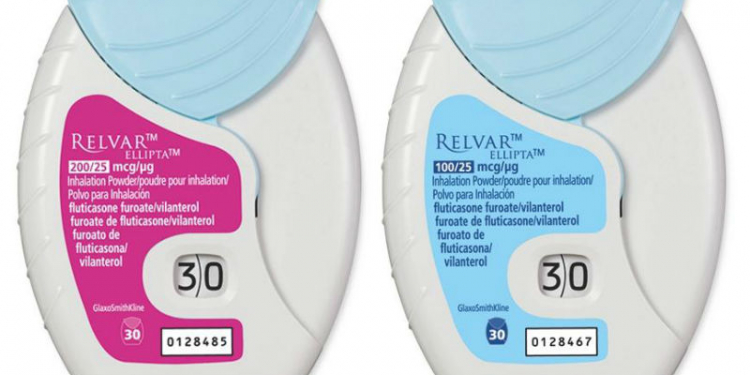The FINANCIAL — GlaxoSmithKline plc on December 2 announced that the Japanese Ministry of Health, Labour and Welfare (MHLW) has approved Relvar Ellipta (fluticasone furoate / vilanterol 100/25 mcg) for the relief of various symptoms with chronic obstructive pulmonary disease (chronic bronchitis, pulmonary emphysema) (in the case where concurrent use of inhaled corticosteroid and long-acting inhaled beta2 agonist is required).
Relvar is a combination of the inhaled corticosteroid (ICS), fluticasone furoate ‘FF’, and the long-acting beta2 agonist (LABA), vilanterol ‘VI’. The approved dose of FF/VI in chronic obstructive pulmonary disease (COPD) is 100/25 mcg administered once-daily using the Ellipta dry powder inhaler (DPI). Relvar Ellipta has been approved in Japan for the treatment of asthma since 2013 in two strengths – 100/25 mcg and 200/25 mcg, according to GlaxoSmithKline.
Eric Dube, SVP & Head, GSK Global Respiratory Franchise, said, “COPD affects people in different ways, and a range of treatments are needed so that physicians can determine the right treatment for the right patient. GSK has over 45 years of experience in delivering medicines that meet the individual needs of patients with respiratory diseases. We are delighted with this approval of Relvar Ellipta, our third COPD treatment to gain marketing authorisation in Japan in under three years, and believe it will be an important new option for appropriate patients with COPD, as well as those with asthma.”
“The approval of Relvar Ellipta for COPD will provide Japanese physicians with a new, important once-daily, inhaled treatment option for appropriate patients,” said Mike Aguiar, CEO of Innoviva, Inc. “This represents yet another significant milestone in the respiratory partnership between Innoviva and GSK.”
The MHLW assessment of FF/VI was based on data from the global clinical development programme, as well as results from a global phase III study (study 200820) which was conducted to provide efficacy and safety data for the combination, FF/VI, compared with its component, VI, specifically in Japanese patients with COPD.
































Discussion about this post